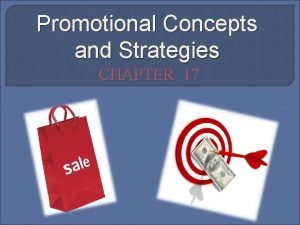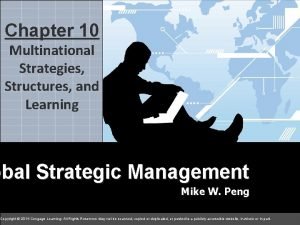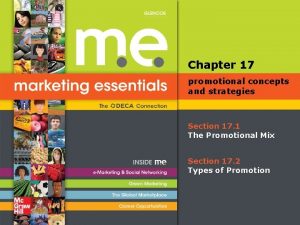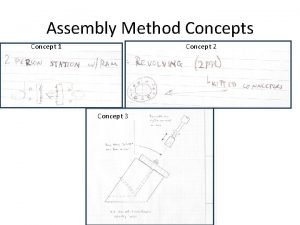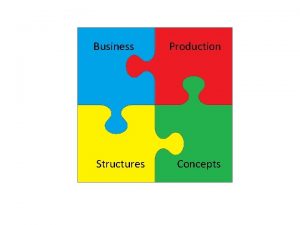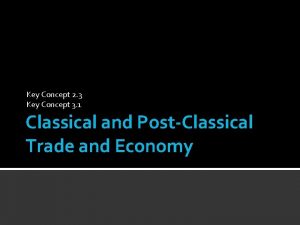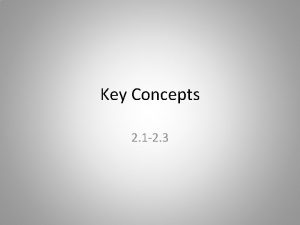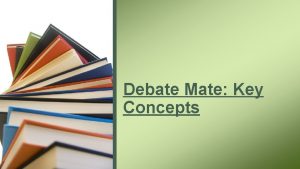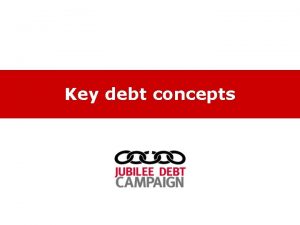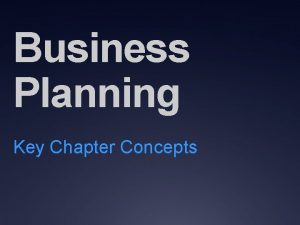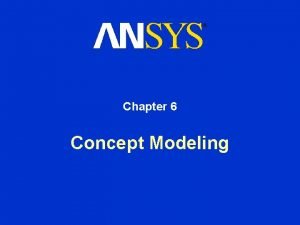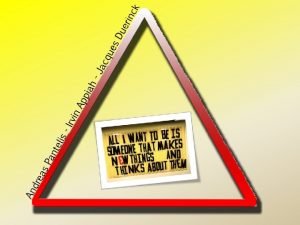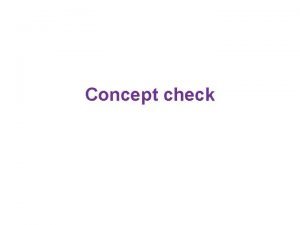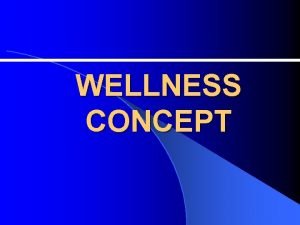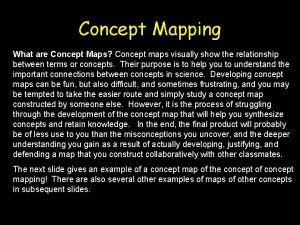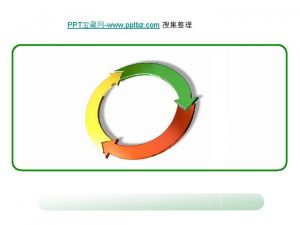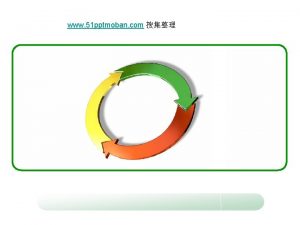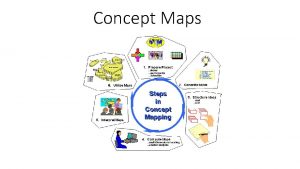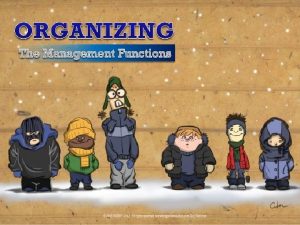Structures Strategies Key Concepts Key Concept 1 The












































- Slides: 44

Structures & Strategies

Key Concepts Key Concept 1 The structures, strategies and/or compositional elements that are fundamental to activities Key Concept 2 Identification of strengths and weaknesses in performance in terms of: roles and relationships; formations; tactical and design elements; choreography and composition Key Concept 3 Information processing, problem-solving and decision making when working to develop and improve performance

Key Concept 1 Key Feature (1) Fundamentals of structures and strategies: The importance of: using space in attacking and defensive situations, for example manoeuvring and out-manoeuvring opponents, creating, exploiting and denying space pressurising opponents in attacking and defensive situations, for example overloading a defence, forcing errors tempo of play, for example using speed in attack/delay in defence principles of individual and team play (width/depth/mobility/delay).

Definitions Structures are the designs or formations which teams use in different activities. Strategies, which often include game plans, are used in different individual and team activities to make the best use of selected structures. They are used to manage the tactics and skills of the game. Within any strategy, you can opt to vary the game plan by using tactics, thus exploiting the opposition and creating the best possible strategic advantage

Describe a structure or strategy that you have used in an activity of your choice.

Describe two strengths and two weaknesses of the structure/strategy that affected your performance as a team or individual.

You will be involved in planning, decision-making, applying and adapting strategies to take account of the demanding changes of performance. Importantly, you will learn to review and evaluate the effectiveness of performance and recommend changes to improve performance. For example, deciding which strategy to employ against your opponent or opponents in a given situation, which maximises your strengths and gives you the best possible strategic advantage.

Use of Space 1. The aim of good tactical team play is being able to make the best use of space when attacking but close down opponent’s space when defending. For this to be successful you need : 2. 3. 4. 5. Good awareness of space Understanding of individual role and role in team Co-operation within structure Support play

Describe a time when you have used space effectively within a structure/strategy.

Planned Strategies 1. 2. 3. 4. 5. 6. Advantages of planned strategies are as follows: All players are clear about their responsibility Speed – provides a fast route to the goal Creates depth and penetration in attack. Ensures space and players are readily available to support alongside and behind the ball.

Describe a time when you have used a planned strategy effectively.

Pressurising Opponents ü By pressurising the opponents, the attacking team will cause the opposition to make mistakes which will allow for more opportunities to score. This can come about by denying space, changing tempo etc.

Describe a time when you have used pressurising opponents effectively which has resulted in a point or goal scoring opportunity.

Changing Tempo 1. By changing the speed of play it can be possible to gain an advantage over the opposition. If a defence holds up the ball it can allow their attack to regroup and mount a serious challenge. In basketball the fast break makes use of the speed to get past the defence and set up a scoring opportunity with the least amount of pressure. 2.

Describe a time when you have changed the tempo within a game and give reasons for doing so.

Principles of Play ü individual and team principles are as follows • It is important that you consider the team principles of communication, co-operation and support, as success is dependent upon how well players relate to each other throughout the game and, more particularly, when a problem arises. • Different situations will demand the selection of different options, for example, whether you are attacking or defending or in response to the opposition's tactics. • Regardless of the situation, the following principles of play, namely, width, depth, mobility and delay must be included in your game plan if you are to be effective. These essential elements will allow you to appropriately vary and adapt your game, control the pattern of play by creating more opportunities whilst limiting your opponents.

These Basketball players work co-operatively on and off the ball to provide width and mobility in attack. They assist each other by moving into space, change direction quickly to dominate space and follow up on rebounds, etc.

Give an example of a time when you have used width, depth, mobility and delay within an activity of your choice.

Key Concept 2 Key Feature (1) In terms of roles and relationships select one or more of the following: recognising individual strengths and weaknesses in a structure /strategy /composition recognising the demands of individual roles during performance select a relevant structure/strategy/composition appropriate for individual/partner/team In terms of formations select one or more of the following: the structure of relevant systems of play in selected activities the benefits and limitations of various systems of play the need to co-operate and support others in team or group situations the ability to pre-plan strategies to meet the demands of play. In terms of tactical or design elements select one or more of the following: identifying and exploiting opponents’ weaknesses recognising the need to maximise strengths within chosen structure/strategy the key elements of overall design/form/style how to explore and develop movement motifs, phrases, themes ways of linking different elements together, eg use of space, body and dynamics of action.

Identification of strengths and weaknesses roles and relationships The success of any strategy will depend upon the effective performance of individuals. It is essential that each player has a clear picture of performance in a number of key areas. For example, you should possess many of the role related technical skills necessary to play a particular position effectively. You should also possess the appropriate physical and mental skills for meeting the specific positional responsibilities. Additionally, you must demonstrate good teamwork and recognise how your role relates to your teamates.

Each player has a specific role to perform with different responsibilities when in offence and defence. They have to work co-operatively with each other to ensure that their strategy is effective. Notice in particular the player who is responsible for setting. She communicates early to the others, indicating where she is going to place the ball.

Discuss your strengths and weaknesses when performing a structure/strategy in relation to roles and relationships.

Identification of strengths and weaknesses formations The successful application of a team or group structure or strategy will depend on the combined tactical, physical and technical skills of the players involved. When planning your structure or strategy, it is essential that you consider your overall strengths and weaknesses. This will allow you to select the most appropriate formation to meet the game demands. For example, in basketball using a 2 -1 -2 defence structure, offers little space for the opposition to manoeuvre, it forces them to take long risky shots and the tight 'rebound triangle' ensures that your team is at an advantage for a quick attack when a rebound is taken.

These Badminton players have selected a front-back formation when in attack and a sideby-side formation when in defence. Both players are equally competent, showing a range of skills with good timing, control and fluency. They are effective decision makers, quickly adapting their play and supporting each other when in attack and defence. They work co-operatively to build up attacking situations and use a wide range of shots to out-manoeuvre their opponents.

Discuss your strengths and weaknesses when performing a structure/strategy in relation to formations

Identification of strengths and weaknesses tactics As part of your game plan, you will include the use of tactics. 'Tactics' are quite simply the variations of play that can be used within a strategy. The overall aim of a tactic is to play to your individual strengths whilst attempting to exploit your opponents'weaknesses. Tactics offer variation in play and are often well rehearsed during practice sessions. This is important for a number of reasons: it consolidates the role that each player has to perform it ensures an almost 'automatic' performance it enables variations within the same tactic to be used should a change or adaptation be required.

In this example, the hockey team (red shirts) are practising different variations of taking a short corner. Notice how each player performs an individual role. The 'ball stopper' creates attacking options by varying the delivery of his pass. The other players time their move to receive the pass, shoot for goal or follow up to support play. The repetitive nature of his practice ensures that he will be able to 'automatically' apply or adapt his tactic in the full game context.

Discuss your strengths and weaknesses when performing a structure/strategy in relation to tactics.

Key Concept 3 Key Feature (1) Using information on team/individual performance to make appropriate decisions when developing, monitoring and evaluating performance. Key Feature (2) The importance during performance of continually being perceptive being creative making effective decisions under pressure exercising effective solutions. Key Feature (3) The importance of adapting/changing and refining structures, strategies and composition in response to performance demands.

The importance of evaluating the effectiveness of structure/strategy Key Feature 1 • • Monitor the structure/strategy so that changes can be made. The team will also need to monitor effectiveness of structure/strategy so that training can be geared to take account of weaknesses. This will improve structure/strategy in the long term.

Describe in detail, one method you have used to gather information on your performance.

Describe a training session you took part in that was adapted to improve the weaknesses in the structure/strategy.

Key Feature 2 • • • Being perceptive during any performance allows the individuals to read the situations more effectively and therefore adapt to the changing environment. Being creative can often solve problems when the structure/strategy has gone wrong. This normally involves deception or skills that are idiosyncratic which Then creates space or scoring opportunities. Making good decisions under pressure is the sign of a competent performer, who remains calm and makes decisions to the benefit of the team.

Describe a situation where you used perception effectively. Describe a situation where you were creative. Describe a situation where you made good decisions when under pressure.

The importance of adapting/changing and refining structures, strategies and composition in response to performance demands. Key Feature 3 • Having the confidence to adapt a structure during a game is essential to overcoming problems that may arise. These include • • • Player sent off Player injured Structure/Strategy not working Opposition weaker/stronger than expected Score

In this situation, a defender is closing the player down. She has to decide whether to take him on or pass. To make these judgements , she will have assessed the following: • • knowledge of her own ability (i. e. possesses various techniques to get passed the defender) space available position of team mates position of opposition.

Describe a situation where your chosen structure or strategy was not effective and give reasons why.

Describe how you adapted the structure/strategy to overcome the problems.

Critical discussion of varying factors. Variation - changing pace of play, changing formation , changing personnel or role of player/s changing style of play e. g. ‘passing game’ > < ‘long ball game’ in soccer of M. F. M. > < Zone. Reasons - fitness demands, level / limitations of performance capable, counteract opponent’s strengths, exploit opponent’s weakness, tactical awareness/problem solving and setting, game score situation, predictability. Composition - Ability of player/s in the team - team formation/player roles dependent on skill level, physical attributes, personal characteristics, fitness level. Game situation can change team composition as can injury, in discipline.

Opposition- Counteract opponents’ strengths, exploit opponents weakness skill level fitness level, tactical awareness, adaptability. Ability - structure or strategy should be within the capability of the performer realistic to skill level and tactical awareness. Structure or strategy will be influenced by the ability of the opposition - counteract or exploit. Exert pressure ( physical and / or psychological ) to effect opponent’s performance. Rhythm - Individual performance can depend on rhythm - repetition of successful course of action, adjustment of technique , correct mistakes, build confidence through familiarity. Changes in rhythm of play can confuse opponent - disrupt game plan. Fitness level - self and opponent, game situation / time limits.

Experience - Full understanding of skill through extensive practice, application of skills in game pressure situations. Drawing from past experience will assist in coping with pressure to enable good performance - confidence through familiarity. Tactical awareness in terms of making changes based on what has been successful / unsuccessful on other occasions. Conditions - Effect of own / opponent’s performance caused by physical conditions e. g. fitness, weather, court surface, other equipment ( foot wear ) Psychological conditions e. g. game score situation , coping with loss of player. Maximise effect of favourable conditions minimise effect of adverse conditions. Tactics - Suitability in terms of performer’s capability. Suitability in terms of opponent’s capability. Complexity; variation; adaptability. Progression in complexity. Exploit / counteract.

Conduct - Self discipline - willingness to operate as part of a team Ability to stick with a game plan. Cope with pressure -positive attitude , well focused. Behaviour in terms of rules, co-operation with officials, opponents. Etiquette. Coping with success/failure. Awareness - Recognition of structure or strategy which leads to success for self or for opponent or weakness in own or opponent’s performance. How to exploit or counteract circumstances which occur in a game situation. Colleagues - Suitability of structure or strategy for individual or each individual in a team - role / position in terms of skill level, physical attributes, fitness, personal characteristics- determination, confidence, motivation, reliability. Teamwork - protect weaknesses / exploit strengths.

Balance - Consideration of attacking and defending responsibilities dependent on game situation, strengths of opponents, tactical discipline - individual and collective. Fitness - Recognition of the effect fitness can have on the performance of a game strategy specific aspects required e. g. Full court press in basketball - speed and stamina. Recognition of the specific fitness demands of positions in a structure e. g. . Rugby forward strength /stamina. Effect of fitness on the performance of both basic skills (running, jumping ) and discrete skills (Jump shooting). Adoption of tactics to suit fitness level of players. Improvement in fitness level to enable employment of wider range of tactics.

Formation - Suitability of formation based on the capabilities of team players in tennis of - fitness, skill level , experience, tactical awareness, physical /personal characteristics. Minimise weaknesses, Maximise strengths. Timing - Recognition of when to change a structure or a strategy - game score, time left, predictability. Teamwork e. g. Screening plays rely on accurate timing and co operation
 Chapter 17 promotional concepts and strategies
Chapter 17 promotional concepts and strategies Homology
Homology Connecting the concepts angiosperm reproductive structures
Connecting the concepts angiosperm reproductive structures Multinational strategies and structures
Multinational strategies and structures Types of promotion
Types of promotion Chapter 4 lesson 4: metamorphic rocks answer key
Chapter 4 lesson 4: metamorphic rocks answer key Lesson 1 introduction to waves
Lesson 1 introduction to waves Hát kết hợp bộ gõ cơ thể
Hát kết hợp bộ gõ cơ thể Ng-html
Ng-html Bổ thể
Bổ thể Tỉ lệ cơ thể trẻ em
Tỉ lệ cơ thể trẻ em Gấu đi như thế nào
Gấu đi như thế nào Glasgow thang điểm
Glasgow thang điểm Hát lên người ơi alleluia
Hát lên người ơi alleluia Môn thể thao bắt đầu bằng từ chạy
Môn thể thao bắt đầu bằng từ chạy Thế nào là hệ số cao nhất
Thế nào là hệ số cao nhất Các châu lục và đại dương trên thế giới
Các châu lục và đại dương trên thế giới Công của trọng lực
Công của trọng lực Trời xanh đây là của chúng ta thể thơ
Trời xanh đây là của chúng ta thể thơ Cách giải mật thư tọa độ
Cách giải mật thư tọa độ Làm thế nào để 102-1=99
Làm thế nào để 102-1=99 độ dài liên kết
độ dài liên kết Các châu lục và đại dương trên thế giới
Các châu lục và đại dương trên thế giới Thơ thất ngôn tứ tuyệt đường luật
Thơ thất ngôn tứ tuyệt đường luật Quá trình desamine hóa có thể tạo ra
Quá trình desamine hóa có thể tạo ra Một số thể thơ truyền thống
Một số thể thơ truyền thống Cái miệng xinh xinh thế chỉ nói điều hay thôi
Cái miệng xinh xinh thế chỉ nói điều hay thôi Vẽ hình chiếu vuông góc của vật thể sau
Vẽ hình chiếu vuông góc của vật thể sau Thế nào là sự mỏi cơ
Thế nào là sự mỏi cơ đặc điểm cơ thể của người tối cổ
đặc điểm cơ thể của người tối cổ Thế nào là giọng cùng tên?
Thế nào là giọng cùng tên? Vẽ hình chiếu đứng bằng cạnh của vật thể
Vẽ hình chiếu đứng bằng cạnh của vật thể Tia chieu sa te
Tia chieu sa te Thẻ vin
Thẻ vin đại từ thay thế
đại từ thay thế điện thế nghỉ
điện thế nghỉ Tư thế ngồi viết
Tư thế ngồi viết Diễn thế sinh thái là
Diễn thế sinh thái là Dạng đột biến một nhiễm là
Dạng đột biến một nhiễm là Bảng số nguyên tố
Bảng số nguyên tố Tư thế ngồi viết
Tư thế ngồi viết Lời thề hippocrates
Lời thề hippocrates Thiếu nhi thế giới liên hoan
Thiếu nhi thế giới liên hoan ưu thế lai là gì
ưu thế lai là gì Sự nuôi và dạy con của hươu
Sự nuôi và dạy con của hươu
